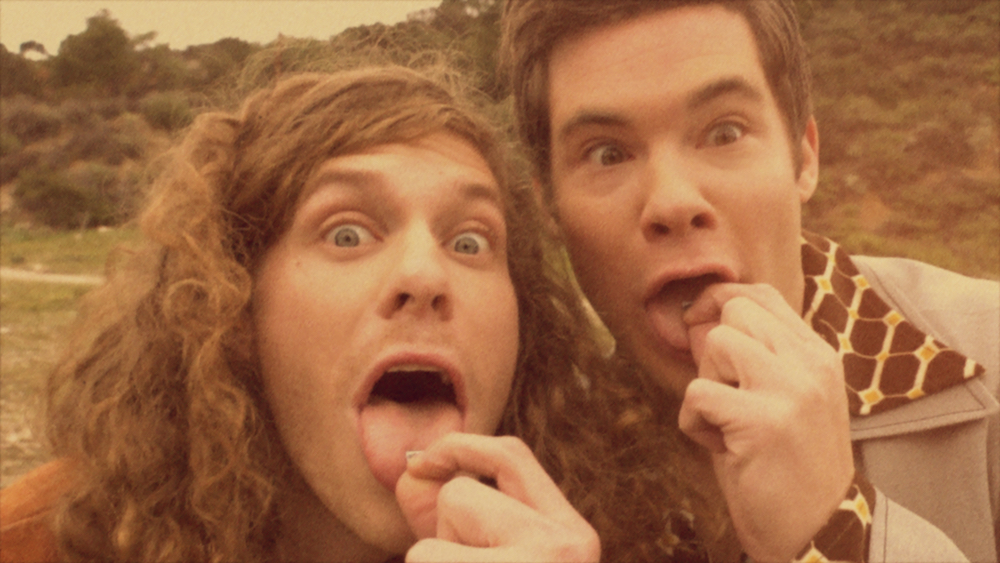‘Have a Good Trip: Adventures in Psychedelics’: Film Review
By Dennis Harvey
LOS ANGELES (Variety.com) – Writer-producer Donick Cary has spent his whole career near the top of the showbiz comedy heap, from stints on “Late Show with David Letterman” and “The Simpsons” to sitcoms like “Just Shoot Me!,” “New Girl,” “Parks and Recreation” and “Silicon Valley.” So it shouldn’t surprise that his first directorial feature, the documentary “Have a Good Trip,” is less a serious dive into its chosen subject than an excuse to have a lot of familiar-face colleagues and acquaintances serve up funny anecdotes.
Since those anecdotes are about hallucinogenic drug usage, this Netflix Original can hardly help but be entertaining. It also comes nicely kitted out with plentiful animation, campy archival snippets, comedy-sketch “reenactments” and more. But those looking for much in the way of real insight will find this amiable enterprise doesn’t stray very far from a general, standard-stoner-yuks tenor of “OMG I was SO HIGH!!!”
At least there’s little pretense otherwise, as we start out with clips from vintage LSD scare films (in which the intrepid chemical explorer is promised “instant insanity, a never-never land of no return”), then jump to Nick Offerman as a nominal-host “scientist” in a laboratory. He admits, “Don’t get me wrong, drugs can be dangerous … but they can also be hilarious.” After duly psychedelic cartoon opening credits, we meet the first of numerous celebrities who tell tales of personal trippage in chaptered, standalone sequences.
That initial storyteller is Sting, whose reminiscences are amusing. But he also seems to have derived more philosophical and spiritual value from his experiences than anyone else here. “Even when I’ve had a bad trip, and I’ve had many, I always realized it was what I needed,” he says. More typical are comedians like Sarah Silverman and Nick Kroll, who simply recall wacky behaviors under the influence.
Some of these anecdotes are illustrated in more animation (by Sugarshack, whose artists strike a colorful median between “Yellow Submarine” and Sally Cruikshank), others in live-action skit form. The late Anthony Bourdain’s formative Catskills multi-drug blowout is raucously acted out by young performers, for instance, while later on, Paul Scheer and Rob Corddry play each other in back-to-back flashbacks. Lewis Black recalls the mortification of no longer being able to remember his name on acid; Carrie Fisher an encounter with a “misbehaving” acorn in Central Park. Rapper A$AP Rocky wins a gold star for confessing “What can I say, no lie: A rainbow shot out of my d—, and it had a sound like a piano.”
Even the bad first-trip recollections of Ben Stiller, Rosie Perez (who was dosed without her consent) and others are played for laughs. We do get a few more serious words on the subject from Deepak Chopra, Zach Leary (Timothy’s son), and Dr. Charles Grob, an expert on the therapeutic potential of hallucinogens to treat anxiety, substance abuse, mental illness and more. That field’s highly promising research was cut off by criminalizing government reaction against 1960s recreational usage, though a postscript here notes such studies have recently been allowed to commence again.
Grateful Dead drummer Bill Kreutzmann and Flower Power pop star Donovan appear briefly to represent the hippie era’s earnest lysergic and psilocybic experimentation. But with the primary interviewees here being much younger, “Have a Good Trip” is dominated by folks who did drugs with no higher goal in mind than fun. Some admit having done “a lot” of acid or ’shrooms, yet there’s very little discussion of how it changed them, or what if anything they learned. There’s more attention paid to a list of druggy “don’t’s,” including such obvious no-no’s as “driving on acid,” and tripping with prankster jerks who’ll try to “freak you out.”
Ergo the best of “Trip” winds up being its most baldly comedic, particularly a mock 1970s “LSD Afterschool Special” in which Adam Scott grimly narrates the alarmist tale of four nice suburban teens lured into doing “hard drugs.” Naturally, every possible worst-case scenario ensues. Its progress interspersed throughout the documentary, this fictive tragedy is a highlight, as are the too-brief excerpts from (real) vintage classroom cautionary films.
Cary’s slick, starry and breezy pet project only reaches the 75-minute point before amply-padded final credits commence. It’s dedicated to Fisher and Bourdain, who both passed away since filming their cheerful appearances here. Indie rock legends Yo La Tengo contributed the original score, though their signature sound isn’t much in evidence until a closing song.

